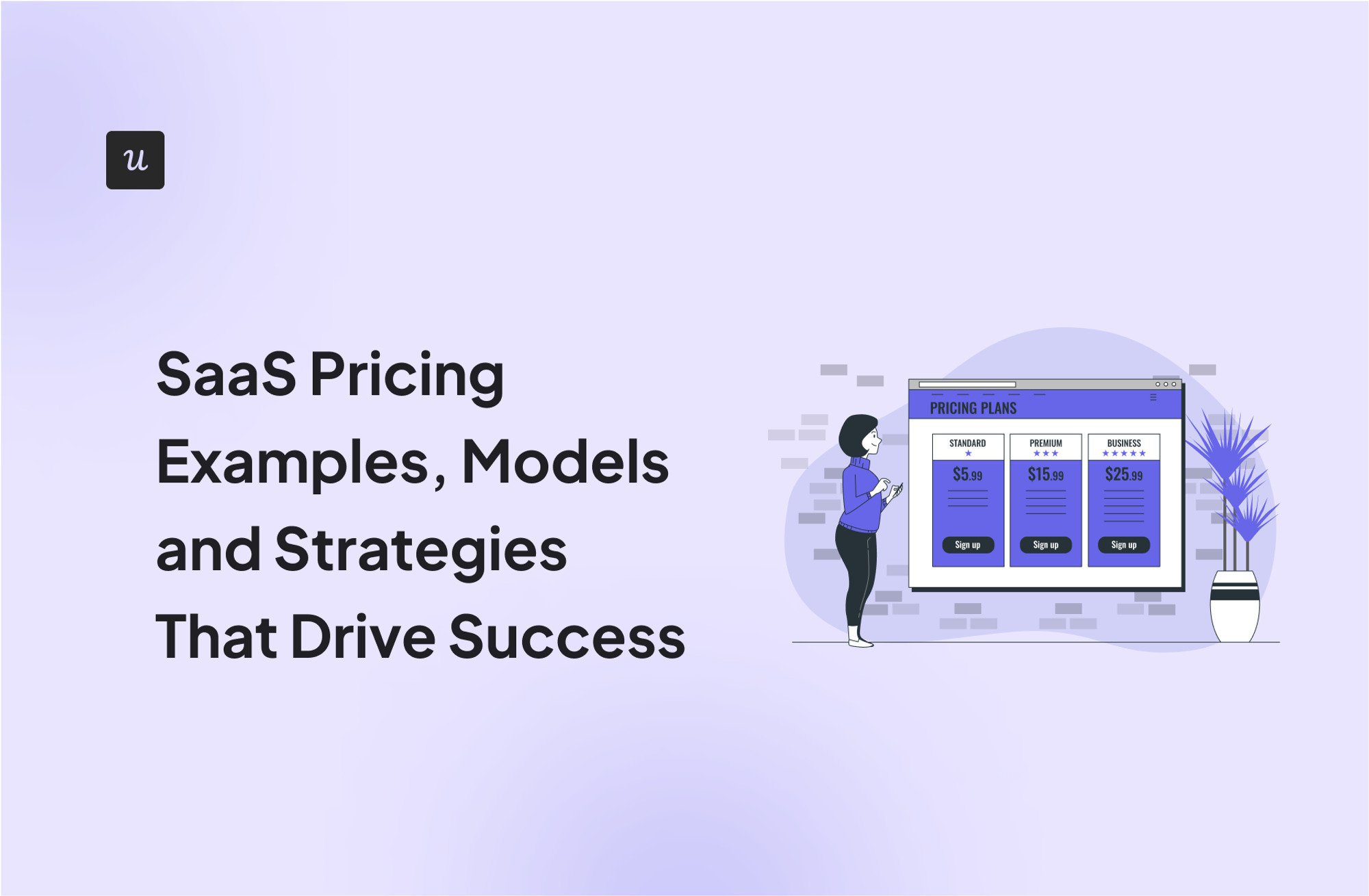
Looking for SaaS pricing examples to get inspiration for your own strategy? We’ve got you covered!
In this piece, we’ll explore different pricing models and go over some brands that implemented these in real life.
Hopefully, by the end of the article, you’ll have ideas on how to design a pricing strategy that contributes to product growth.
How do you currently determine which pricing model (e.g., flat-rate, usage-based, tiered) is right for your users?
Try Userpilot Now
See Why 1,000+ Teams Choose Userpilot

Why is a SaaS pricing strategy important?
SaaS pricing can make or break a product. Pricing your product too low can reduce your credibility and impact your profit margin. Charging too much, on the other hand, could lead to customer churn.
To drive product growth, it’s crucial to develop pricing that provides value to customers and favorably positions you in the market.
SaaS pricing strategy vs pricing model
The terms SaaS pricing strategy and SaaS pricing model are often used interchangeably. However, they are different.
The pricing strategy is a guiding process that determines how a business chooses its price points.
It focuses on the bigger picture, including market positioning, competitive analysis, and overall business goals.
In contrast, a SaaS pricing model is the specific framework or structure used to charge customers based on usage, access level, or feature set. It centers on the mechanics of how customers are billed, determining how price is applied in a practical sense.
Popular SaaS pricing models
Now let’s have a detailed look at different pricing models and discuss their advantages, disadvantages, and real-life applications.
Flat rate pricing
Flat-rate pricing is a straightforward pricing model where customers pay a single fixed price for access to the entire product, regardless of usage, features, or the number of users.
Flat-rate pricing is often used when the product’s value proposition is clear, and the company wants to minimize complexity in billing.
Many SaaS companies, including Basecamp, prefer this SaaS pricing model. For example, Basecamp Business is available at $99/month flat, with features like 500GB of storage space and unlimited projects available to all customers, regardless of their personal needs.
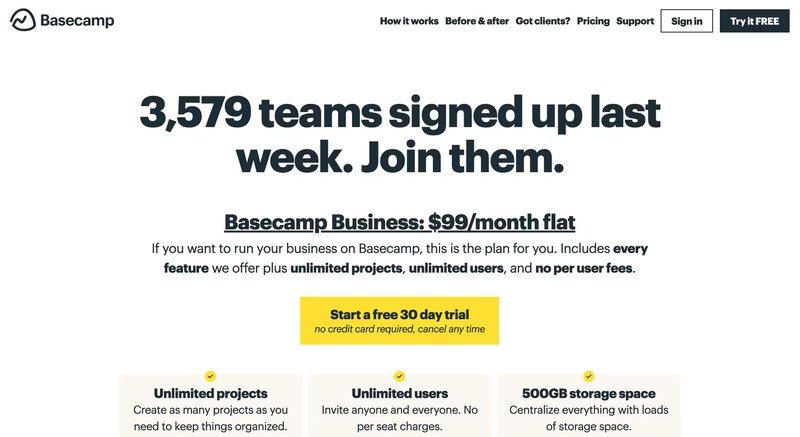
Pros of flat rate pricing model
- Communicates clear value: With a straightforward price, companies can convey the value of their offerings without confusing potential customers with complex pricing plans.
- Easier sales and marketing: A single, straightforward price point simplifies the sales process, making it easier to market and sell the product without overwhelming customers with multiple pricing options.
Cons of flat rate pricing model
- Lack of personalization: Customers’ needs vary. Some features will be useful, while others will be unused. For instance, a product priced with enterprise companies as the target market will likely feel too expensive for small businesses.
- You lose potential revenue streams: With a single price point, it can be difficult to upsell when customers need more functionalities. A business may also overuse your service, causing you to incur additional expenses.
Usage-based pricing
Also known as consumption-based or pay-as-you-go model, the cost of a product is directly related to how much a customer uses it.
For example, a customer who subscribes to a 5GB monthly cellphone data plan will have to pay more if they exceed this limit.
Usage-based pricing is one of the most popular SaaS pricing models among infrastructure software companies like Twilio.
Whether it’s the number of voice minutes used, the number of messages sent, the duration and number of participants in video sessions, or the number of emails sent, customers pay for what they use.
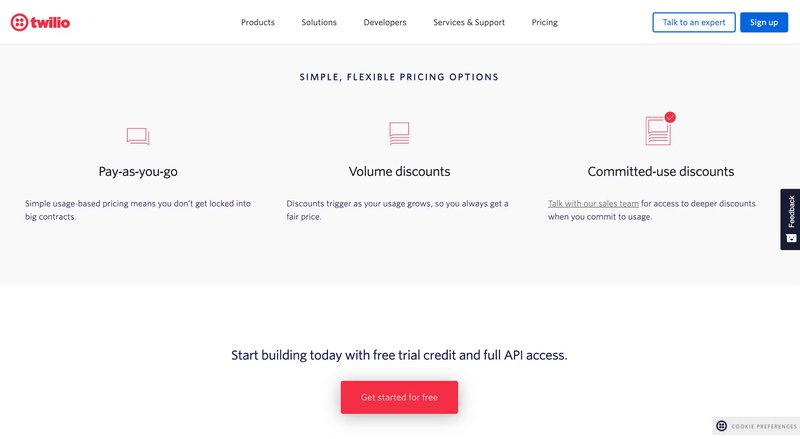
Pros of usage-based pricing model
- Lower barrier to entry: Lower upfront costs can attract new customers who might be hesitant to commit to a higher, fixed subscription fee, resulting in higher acquisition rates than in other pricing models.
- Higher perceived value: Customers pay only for what they use, which directly ties the pricing to the value they receive, making it appealing and fair for a wide range of users.
Cons of usage-based pricing model
- Revenue uncertainty: It can be difficult to predict revenue since your growth is closely tied to customer usage. This can make budgeting and planning difficult.
- Complex billing: Tracking and accurately billing usage can be complex, requiring robust systems to monitor usage metrics and prevent errors.
Tiered pricing
In tiered pricing, companies offer multiple plans, each with different sets of features and usage limits.
One of the companies successfully implementing this pricing model is Userpilot, an all-in-one growth platform. It offers 3 tiers, with higher tiers providing additional value or functionality compared to lower ones.
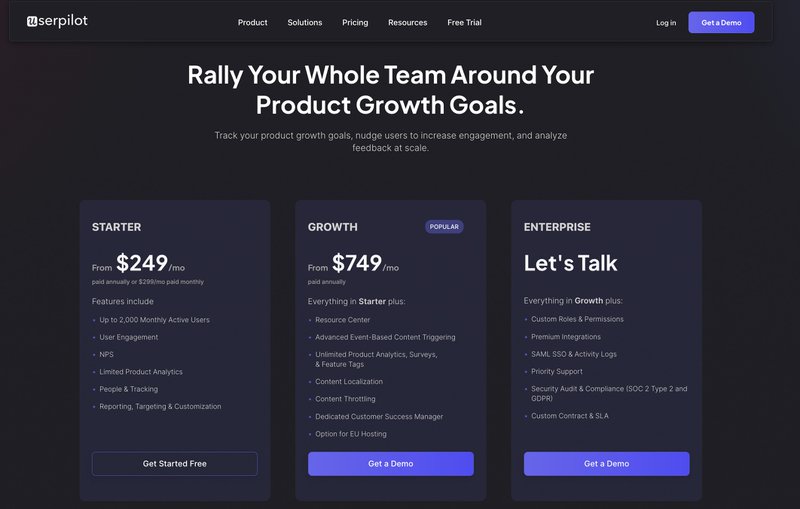
Pros of tiered pricing model
- Flexibility and customization: This model allows customers to choose the tier that best suits their requirements without paying for features they don’t need.
- Appeals to different customer segments: Tiered pricing allows businesses to cater to a wide range of customers, from small startups to large enterprises, by offering various pricing levels that match their specific needs and budgets.
- Facilitates easy upselling: As customers grow and need more features or higher usage limits, they can easily upgrade to a higher tier, driving additional revenue through upselling.
Cons of tiered pricing model
- Risk of overwhelm: Too many options can lead to confusion, causing customers to abandon your business to a competitor with fewer options. That’s why it is usually ideal to stick with three price tiers.
- Risk of overlapping features: Defining distinct values between tiers can be challenging, leading to feature overlap that may reduce the perceived value of higher-priced tiers.
Per user pricing
In this model, customers are charged based on the number of users who have access to the software.
This model is popular in team-centric SaaS products like collaboration tools, project management software, and CRM systems, where multiple users from the same organization need access.
Canva effectively uses the per-user pricing model for its Pro and Enterprise plans. Companies pay a monthly fixed fee for each user, who then can use all the features available within the plan
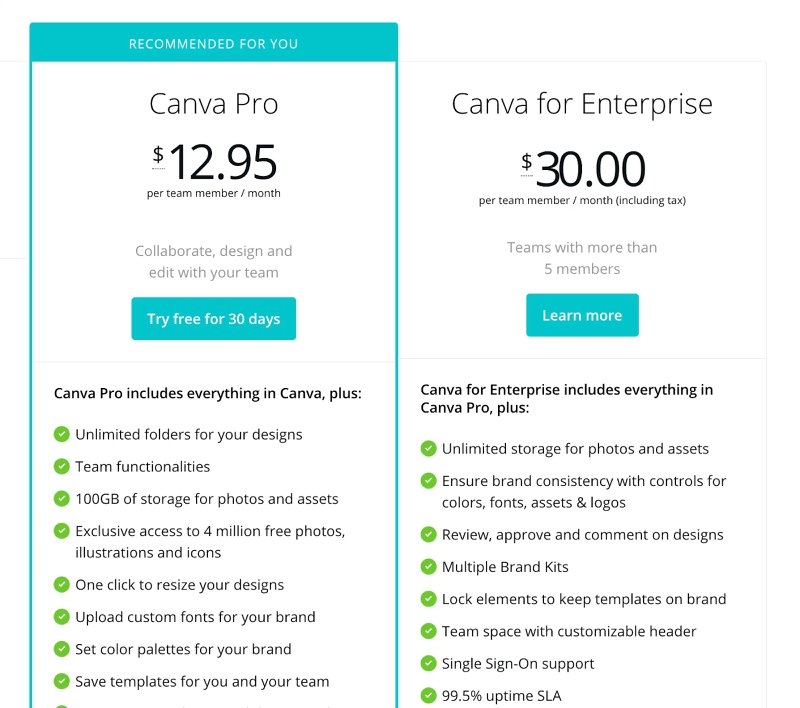
Pros of per-user pricing model
- Predictable revenue: Businesses can easily forecast their income based on the number of users. This also helps with budgeting, financial planning, and scaling.
- Lower entry barriers for smaller teams: Small teams can start with just a few users, keeping initial costs low while still accessing the full suite of features, making the model attractive for startups and growing businesses.
Cons of per-user pricing model
- Revenue limitation: Since revenue is closely tied to the number of users, revenue growth can stagnate if the business does not frequently add new users.
- Limited value for occasional users: Charging per user can be inefficient for teams where some users access the software infrequently, leading to perceived overpayment.
Per feature pricing
In a per-feature pricing model, customers are charged based on the specific functionalities they choose to access within the software.
In other words, instead of paying for the entire product, customers select and pay only for the features they need.
Amazon AWS is one of the best SaaS pricing examples with this model. AWS allows users to select the specific services they need and then use the pricing calculator to estimate their total yearly costs.
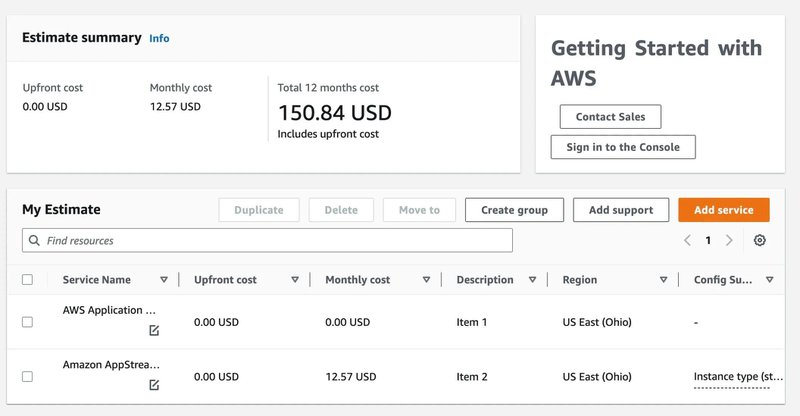
Pros of per-feature pricing model
- Personalized user experience: Customers have full control of their product and interface, and they can tailor the product to their specific requirements.
- Strong upgrade incentive: Per-feature pricing provides a straightforward reason for customers to upgrade: gaining access to additional functionalities.
Cons of per-feature pricing model
- Customer frustration: Customers may feel they are missing out on a complete product experience, especially if key features are locked behind additional costs.
- Difficult to implement: Companies may find it challenging to decide which features to include in each package. This is a resource-intensive process and will require lots of research to understand customer wants.
Freemium pricing
Freemium pricing is a business model where a basic version of software is offered for free, with the goal of attracting a large user base. To unlock more advanced features, users are encouraged to upgrade to a paid premium version.
For example, Drift offers completely free access to features like live chat, email fallback, and Slack integration. Users get to experience the product, and after they experience its value and are ready to explore more features, they turn into paying customers.
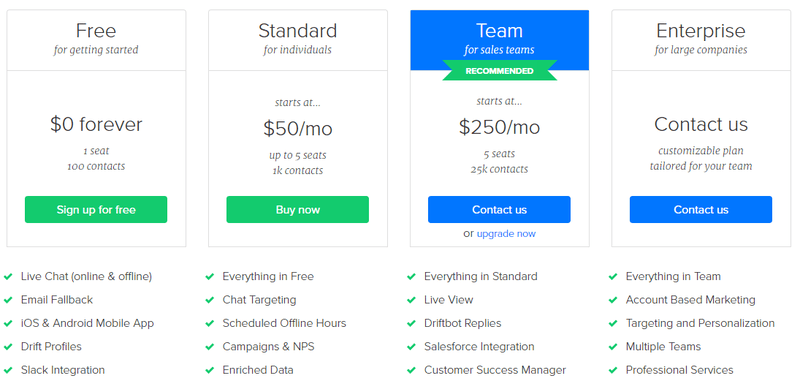
Pros of the freemium pricing model
- Increased brand exposure: With more users on the platform, the brand gains wider visibility, enhancing word-of-mouth marketing and organic growth.
- Upsell opportunities: Once users experience the value of the free version, there’s a clear path to upsell them to a premium plan, driving revenue growth from engaged users.
- Valuable user feedback: A large base of free users provides insights into usage patterns, feature popularity, and potential areas for improvement, guiding future product development.
- Market validation: The freemium model allows companies to test their product in the market and validate demand without requiring users to make a financial commitment.
Cons of the freemium pricing model
- Low conversion rate: Many users may remain on the free plan indefinitely – it can be difficult to establish value and convince users to upgrade to paid versions.
- High operational costs: Supporting a large number of free users can strain resources, especially if the conversion rate to paid plans is low, leading to increased costs without immediate revenue.
- Devalued perception: Offering too much for free can lead to a perception that the premium features are not worth paying for, potentially reducing the appeal of upgrading.
How to choose the right pricing model for your SaaS
Choosing the right pricing model for your SaaS product is a complex process that involves understanding the market and aligning your pricing model with customer value.
Here’s a guide to choosing the most suitable pricing model for your SaaS product:
- Know your target market: Start by analyzing your ideal customers, their needs, and how they perceive value. Consider whether they prioritize cost-effectiveness, feature access, scalability, or usage flexibility. Understanding your audience will help you choose a model that resonates with them.
- Analyze competitors: Look at how your competitors are pricing similar products. This can provide insights into what works in the market and help you differentiate your offering. Avoid simply copying their approach; instead, find gaps you can exploit to offer a unique value proposition.
- Evaluate product complexity: Consider the nature of your product—how complex it is, the value each feature provides, and how users engage with it. For feature-rich or complex products, tiered or per-feature pricing might work best, while simpler tools may benefit from a flat-rate or per-user model.
- Align with your business goals: Determine what your primary objectives are—whether it’s rapid user acquisition, maximizing revenue, or increasing customer retention. Pricing models like freemium or usage-based can help boost acquisition, while tiered pricing often maximizes long-term revenue.
- Test and iterate: Don’t be afraid to experiment with different pricing structures. A/B tests various models or offers different plans to a subset of users to gauge which approach drives the best results. Use data and customer feedback to refine your pricing strategy over time.
Types of SaaS pricing strategies
After choosing the mode, it’s now time on working the strategies for implementing it.
In the below section, we will go over some pricing strategies that
Competitor based pricing
As the name suggests, this pricing strategy involves using your competitors’ pricing as the benchmark for your SaaS product. It does not consider factors like production costs or market demand gives you minimal control over your pricing.
This pricing strategy is a good option for newer companies that are unsure of their product’s value without data to aid their decisions.
Once you have a good idea of how much value your product provides, you can price higher, lower, or on par with the competition.
Penetration pricing
The penetration pricing strategy is also known as introductory pricing. New market entrants usually use it to generate demand in a competitive market quickly.
The idea here is that the company offers a product or service at a low starting price. For example, you can offer a reduced offer for a limited time frame, then subtly increase the price afterward.
Customers will likely feel the need to make quick decisions within that designated time frame, which can be a positive for you, especially if your price beats that of your competitors
Cost-plus pricing
Cost-plus pricing entails calculating business costs and adding a percentage to make profits.
For example, if it costs your company $100 to develop and market software, you may sell the software for $150, which represents a 50% profit.
This strategy, however, is faulty as it does not account for how customers feel about the value of your product, leading to too low or too high pricing. It does not also account for competitor pricing.
Value-based pricing
Value-based pricing is a strategy where the price of a product is set based on the perceived value it delivers to the customer rather than on production costs, competitor prices, or market demand.
This strategy allows SaaS businesses to maximize revenue by charging more for high-value features or use cases that deliver significant results, making it particularly effective in markets where customers prioritize quality and performance over price alone.
Captive pricing
This is a practice where a company sets a lower-than-expected price for its “core” product but charges a higher price for complementary products that are required to make the most of the core product.
This approach creates a “captive” customer base, as the primary product often cannot function without these additional components, leading customers to repeatedly purchase them.
In the context of SaaS, captive pricing might involve offering a core software product at an attractive price while charging more for add-ons, integrations, extra features, or support services that are essential for a fully functional product.
3 Successful SaaS pricing examples
It is a good idea to see how other successful companies have managed their SaaS pricing strategies and models before deciding on your business.
Let us take a look at three successful SaaS pricing examples to inspire you and help you optimize your pricing strategy.
Slack pricing example
Slack employs a blend of two pricing models: a per-seat charge combined with tiered pricing.
New customers can select from three tiers, each unlocking different levels of functionality:
- The Free plan allows unlimited users but limits access to message history and the number of integrations.
- The Standard plan removes restrictions on message history and integrations but does not include enterprise features like single sign-on.
- The Plus plan offers the full suite of features, including enterprise-level services, at the highest cost.
For larger teams, typically those with 50 to 100 users, enterprise features such as single sign-on and compliance reporting become crucial. Slack caters to these needs through its Plus plan.
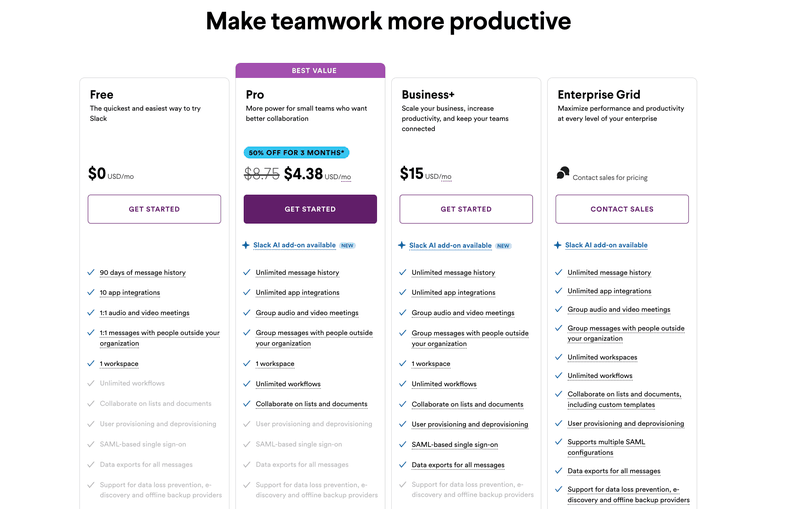
HubSpot pricing example
When setting your pricing, it’s important to consider more than just aligning your pricing tiers with your value metric.
You should also aim to match your pricing tiers with your buyer personas, a strategy that HubSpot executes exceptionally well with its pricing approach.
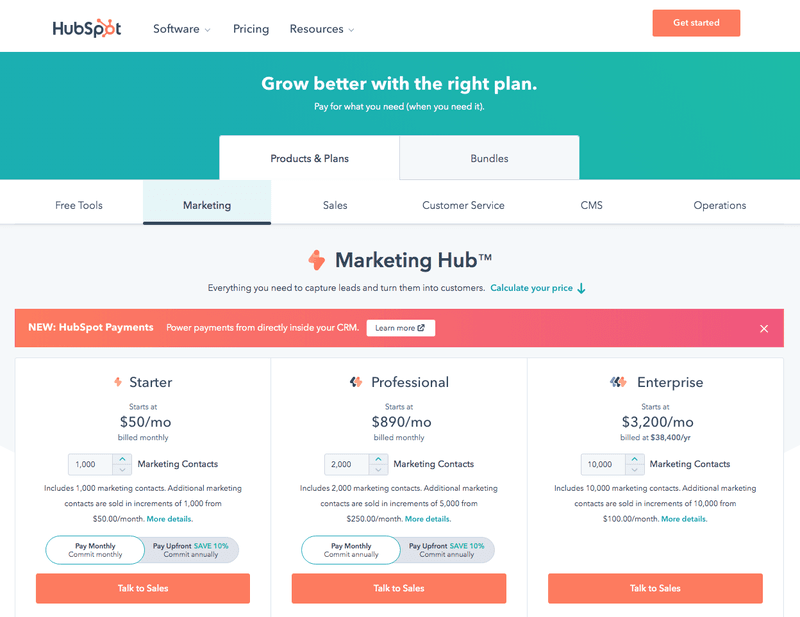
JustCall pricing example
JustCall initially used a per-user, usage-based pricing model based on phone numbers, team members, and integrations, which led to confusion and unpredictable costs for customers.
After receiving feedback, JustCall realized the model caused anxiety as customers struggled to budget due to fluctuating expenses.
To resolve this, JustCall revamped its pricing, introducing four clear plans: Essentials, Teams, Pro, and Business, each tailored to specific business sizes and needs.
This new approach simplifies decision-making, aligns with customer budgets, and offers predictable costs, leading to improved customer satisfaction.
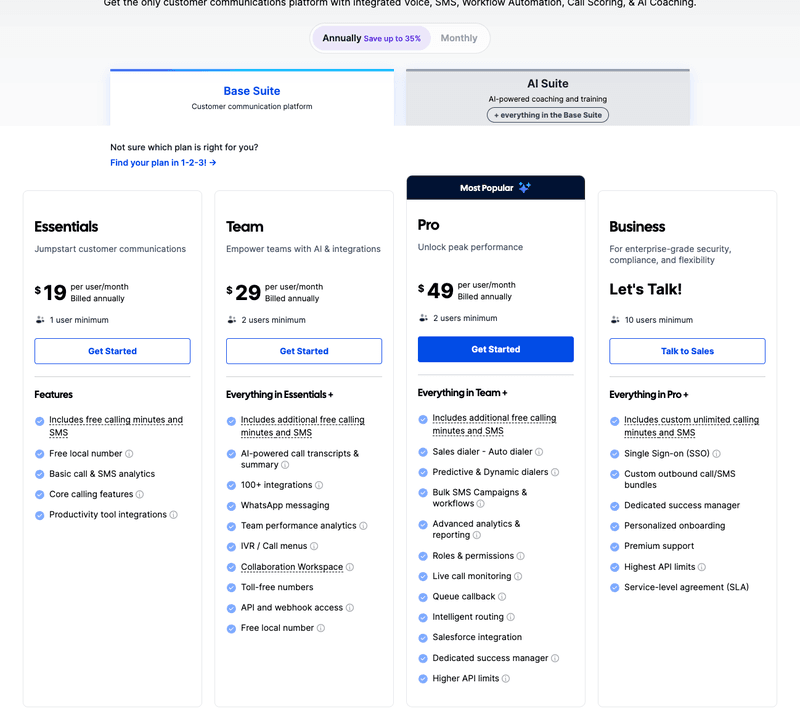
Conclusion
Hopefully, the SaaS pricing examples discussed above can inspire you to craft a model and strategy that aligns with your customer needs and business goals.
Userpilot has a range of analytics and feedback tools that can be helpful in the process of developing pricing. Book a demo to learn more about how our tool can help you in this process!








